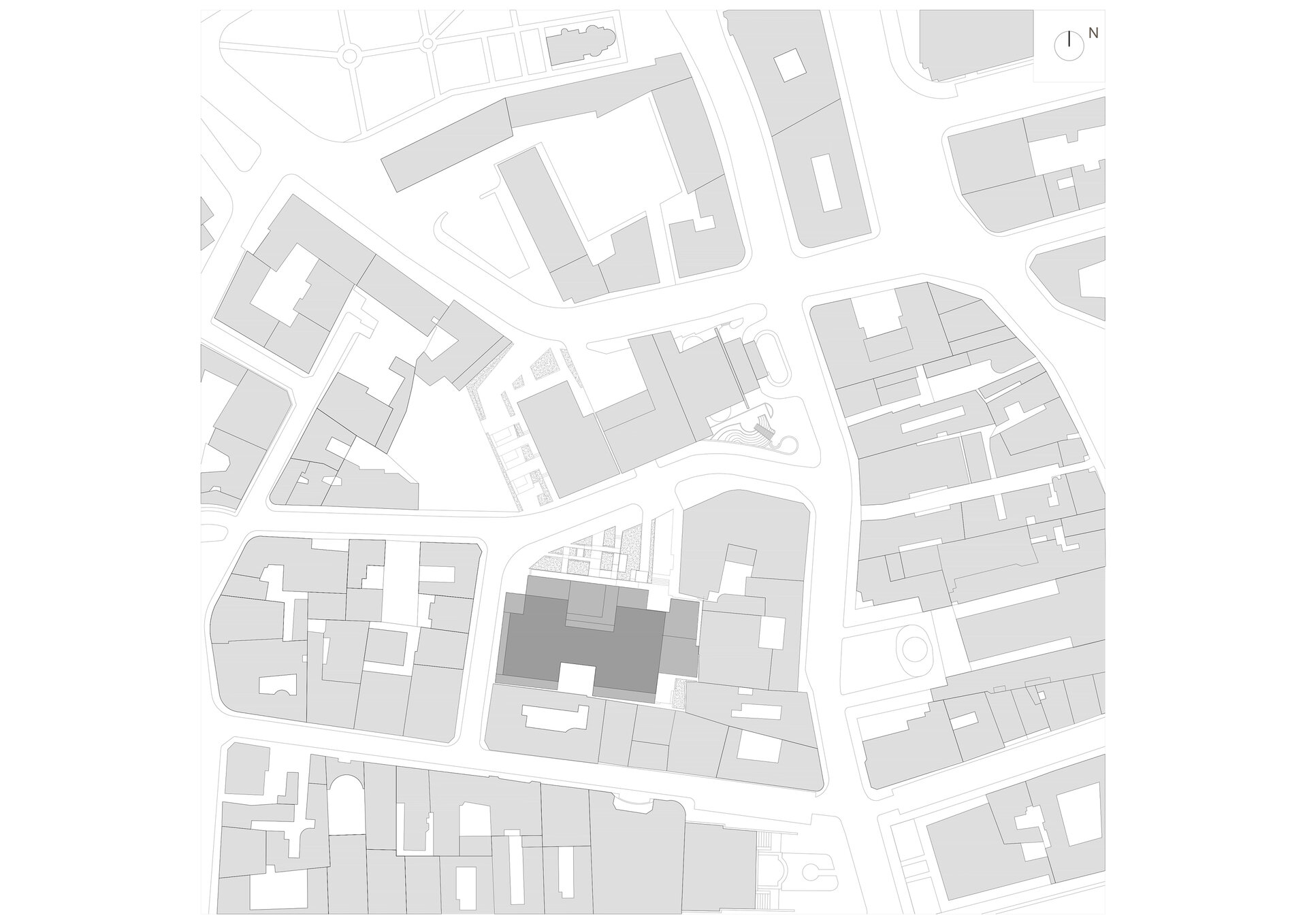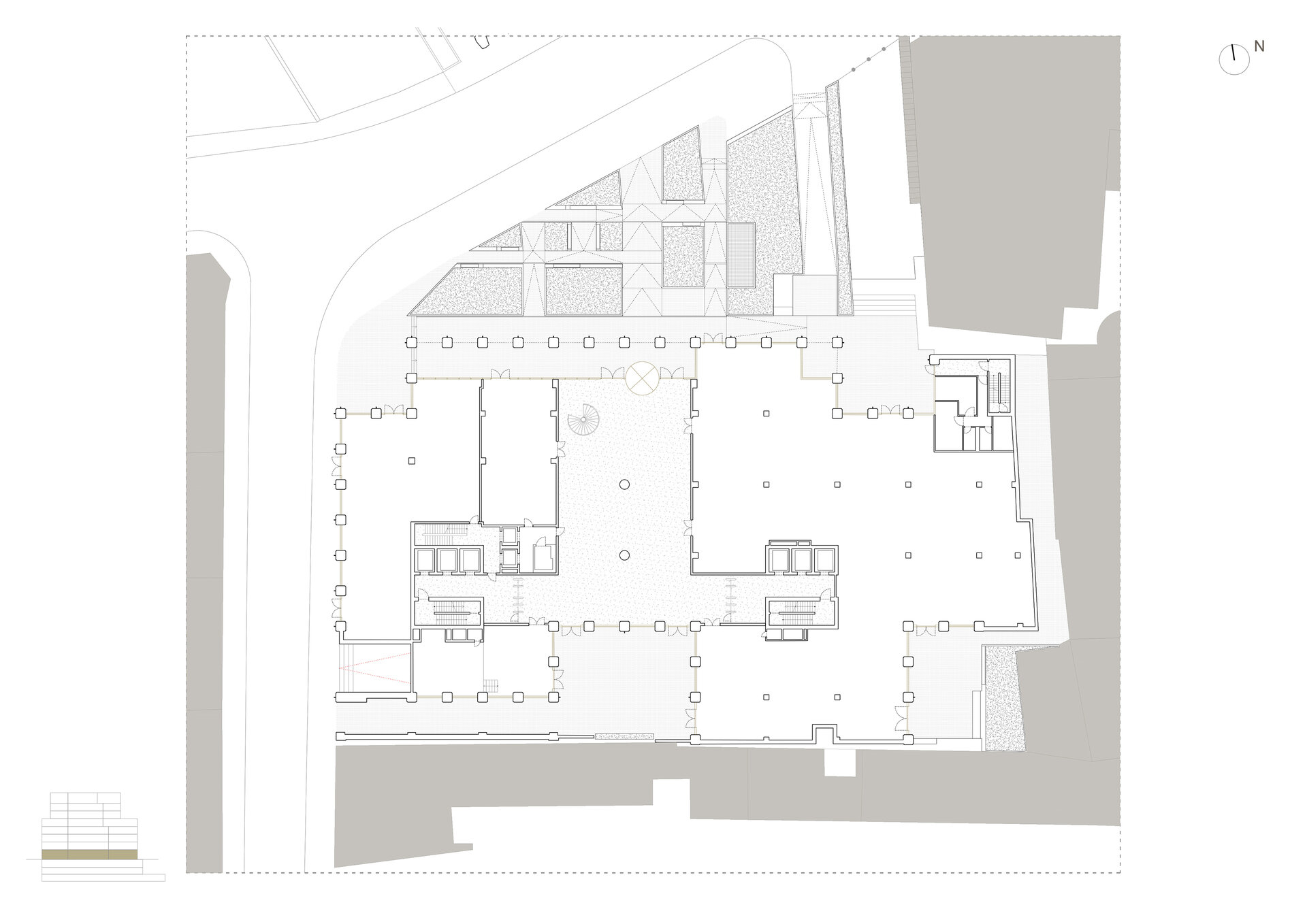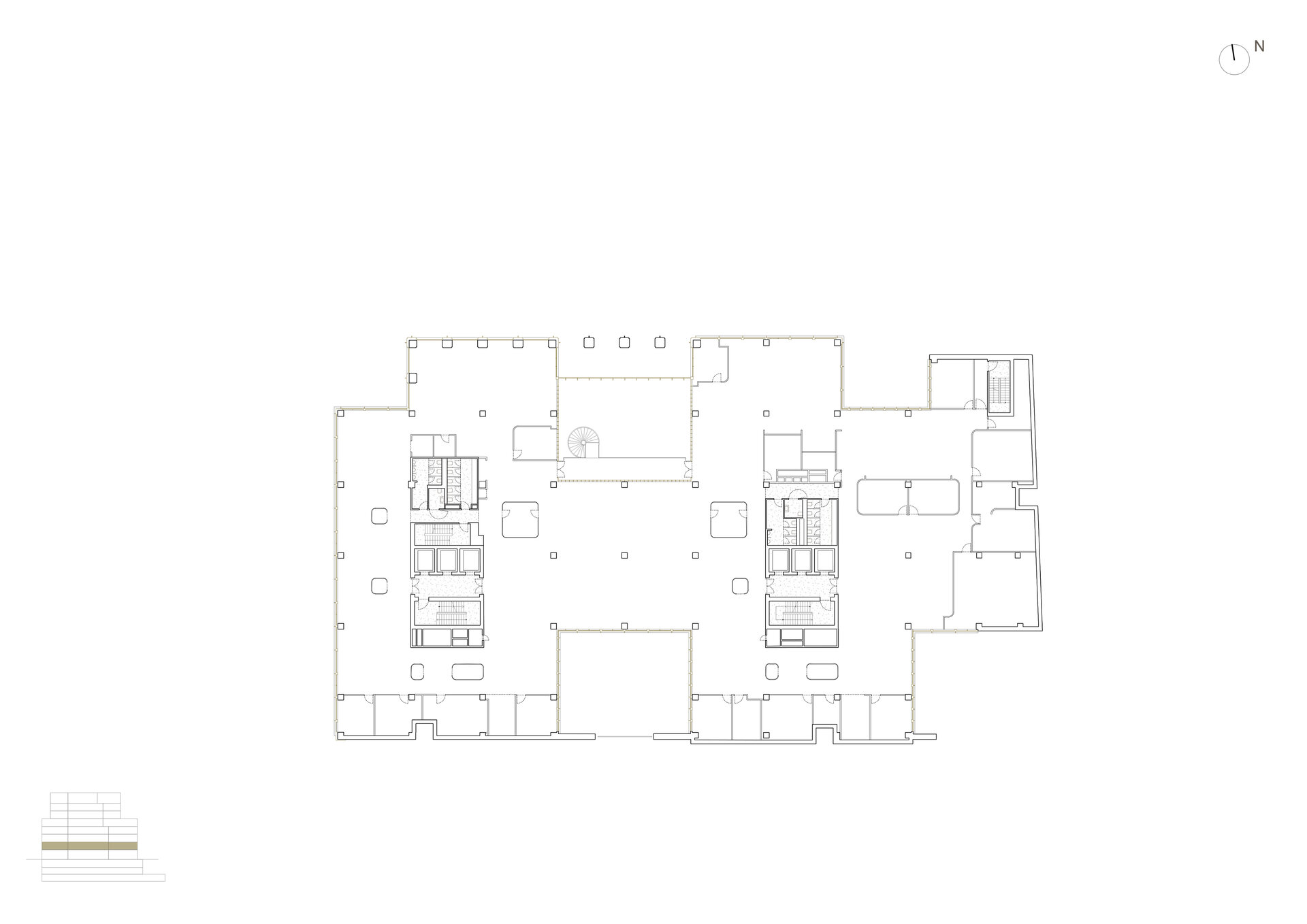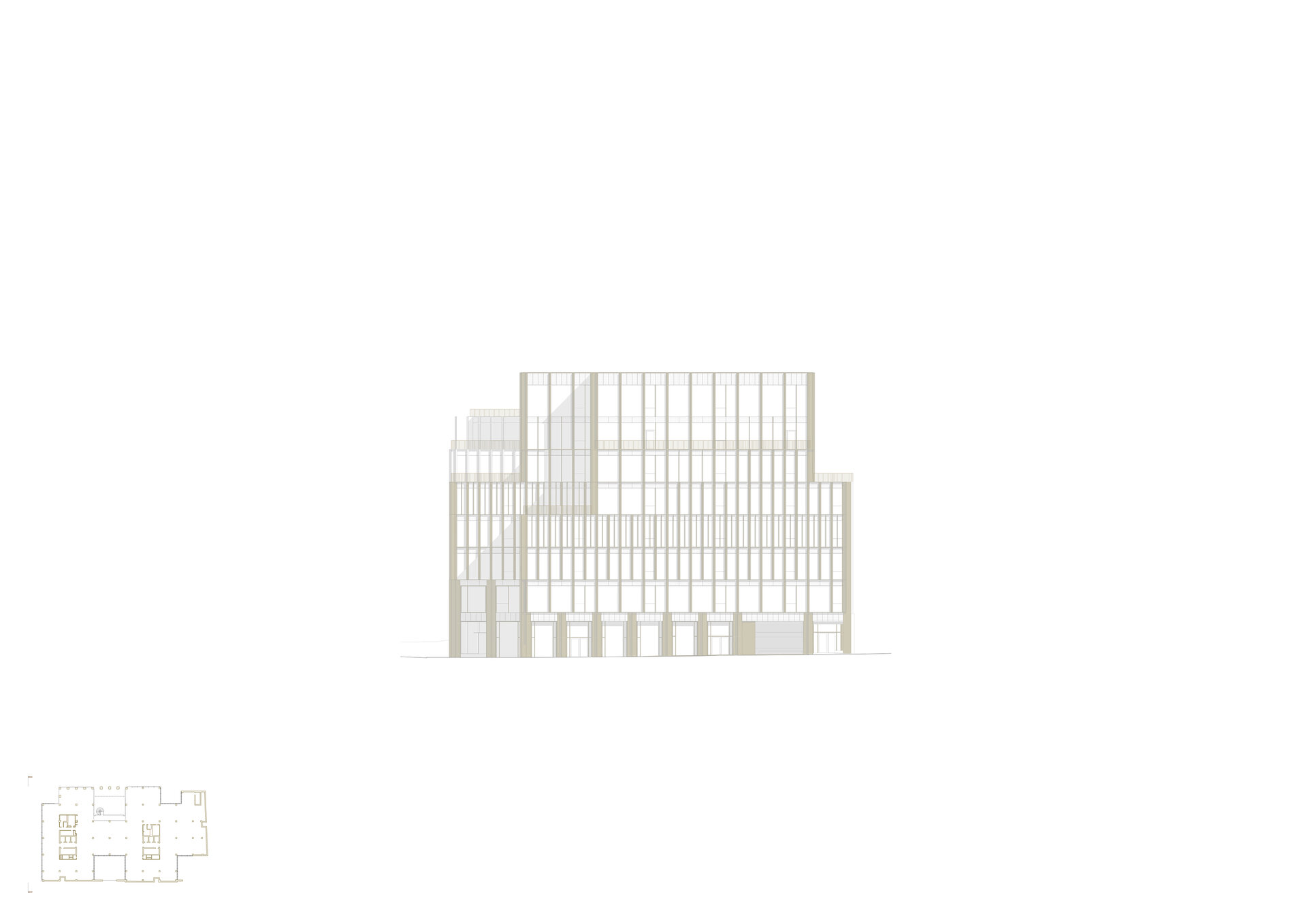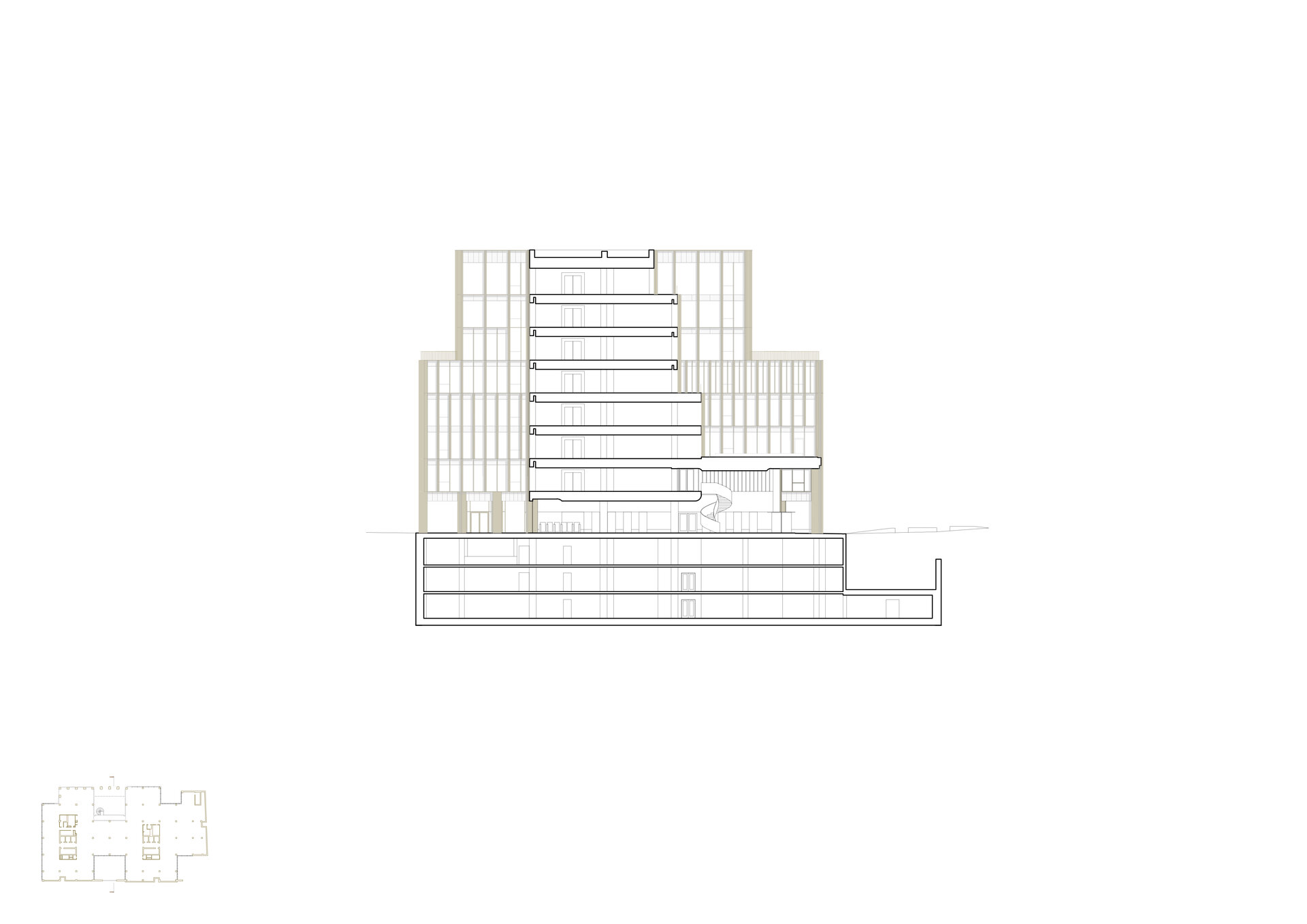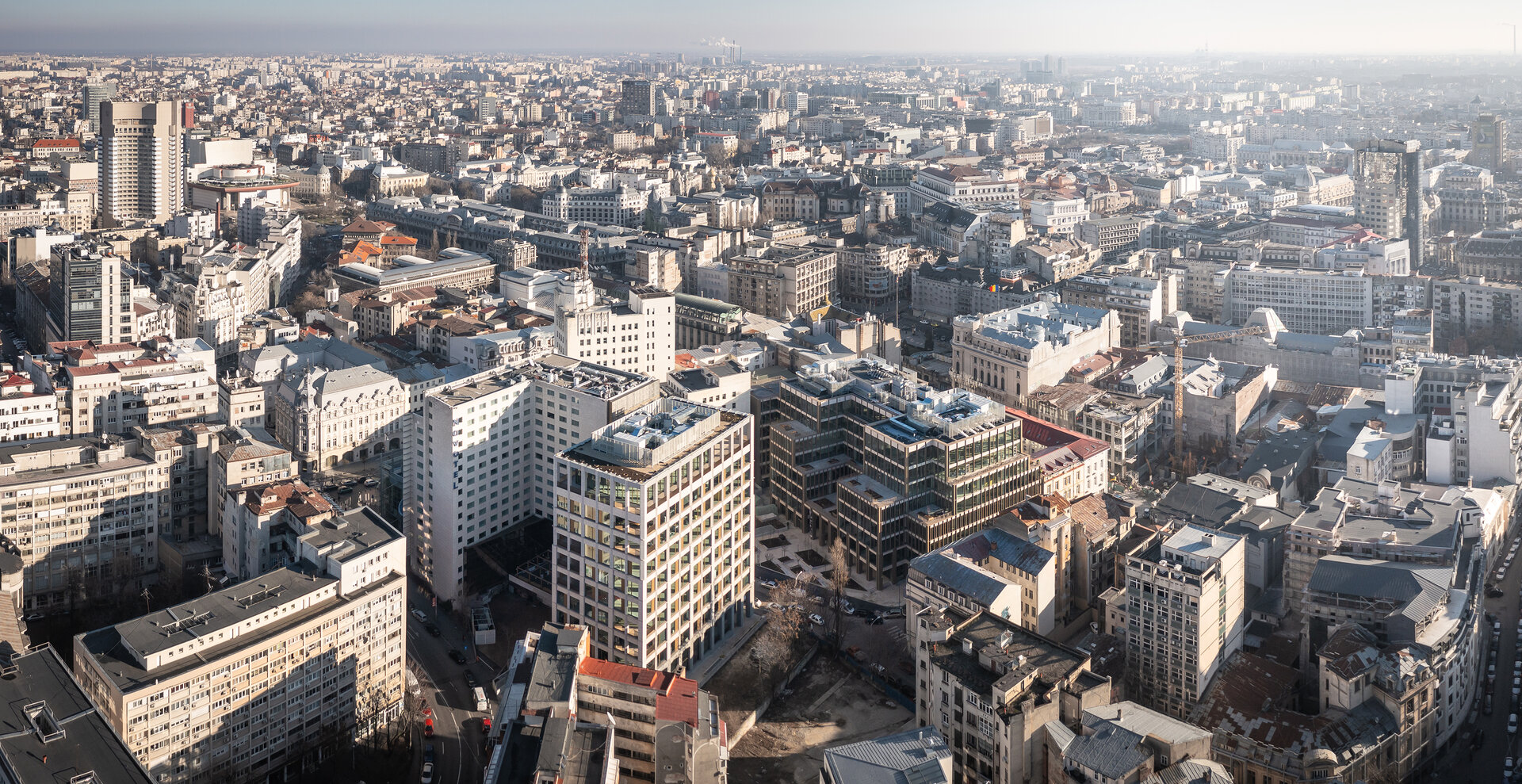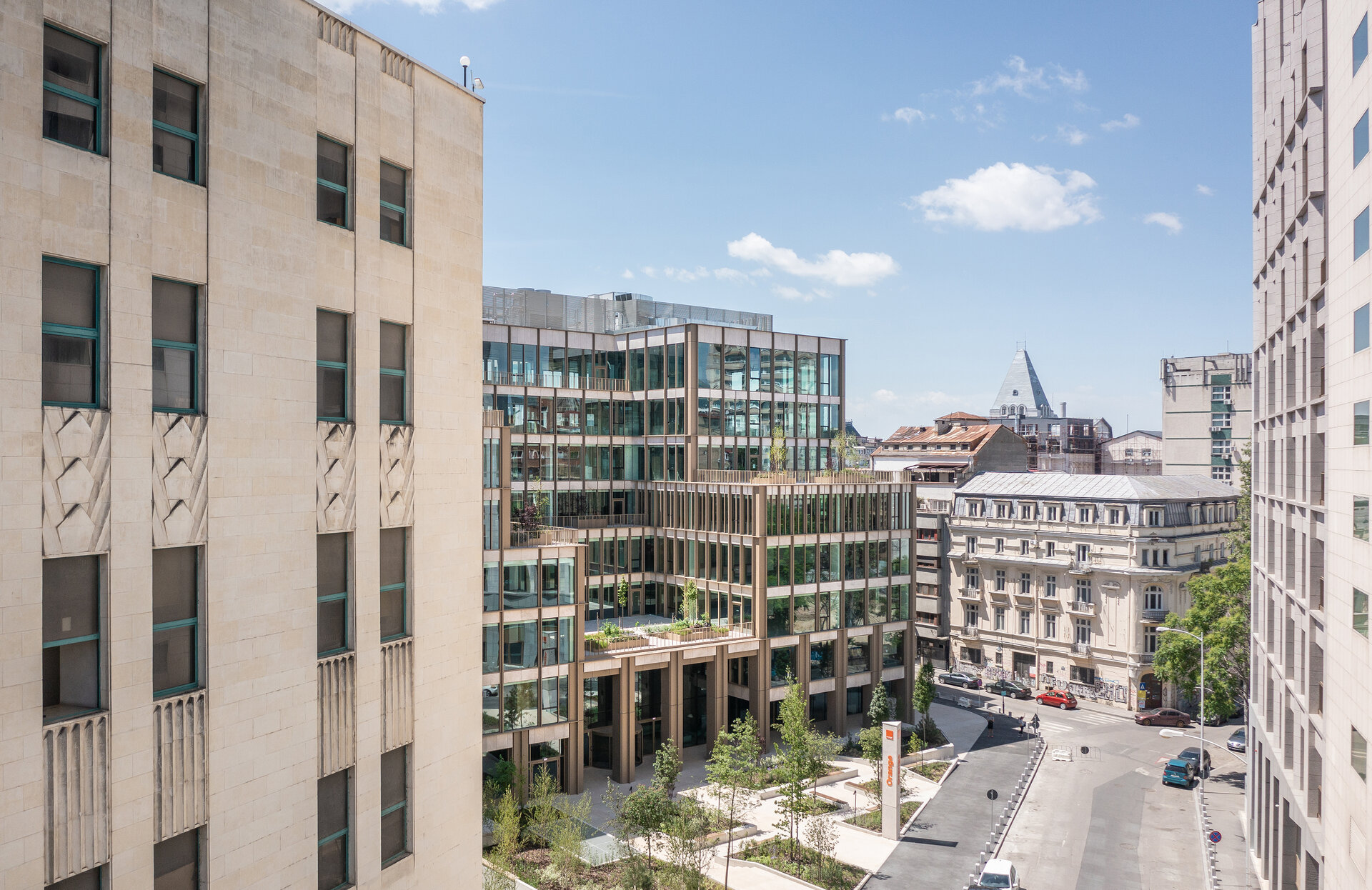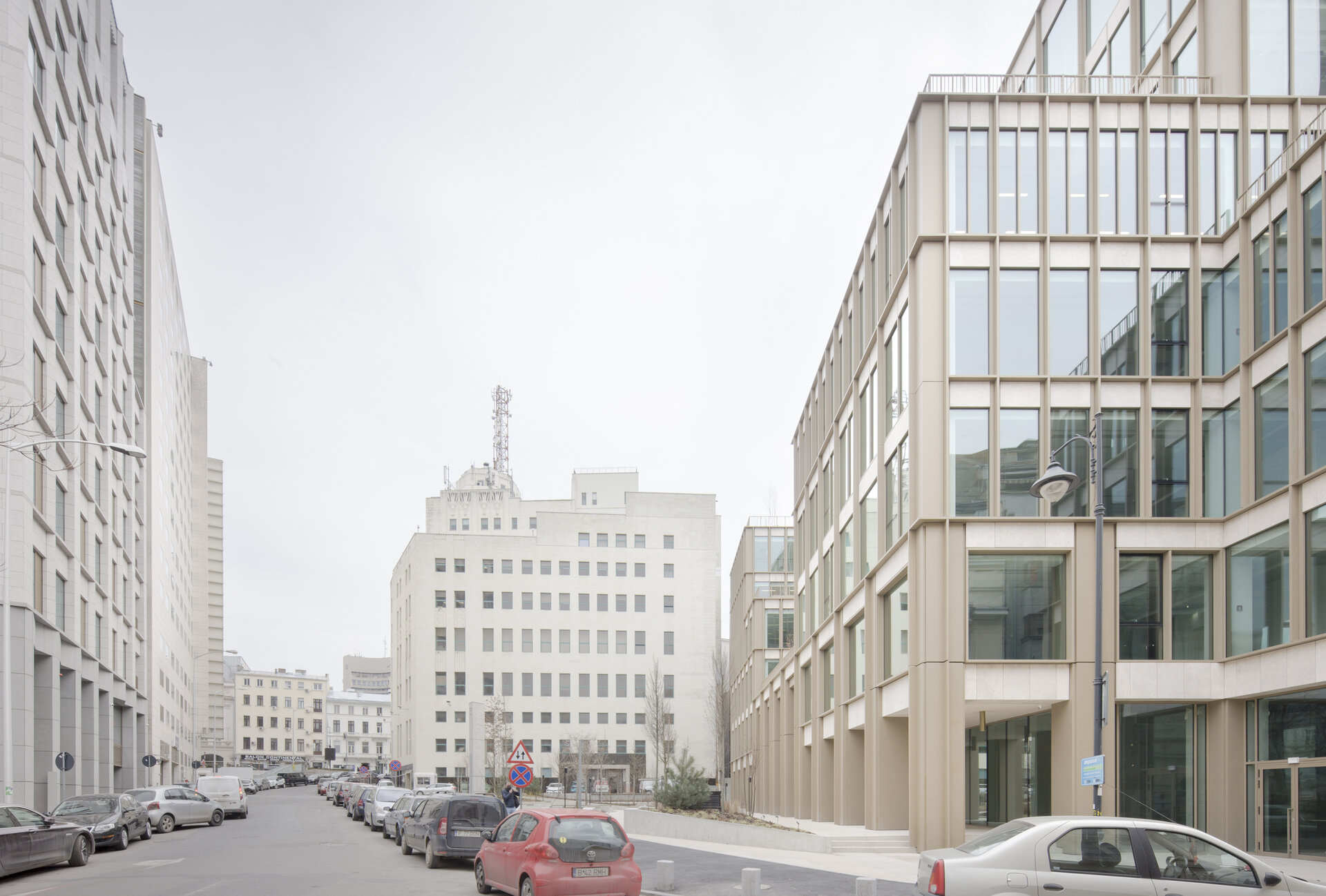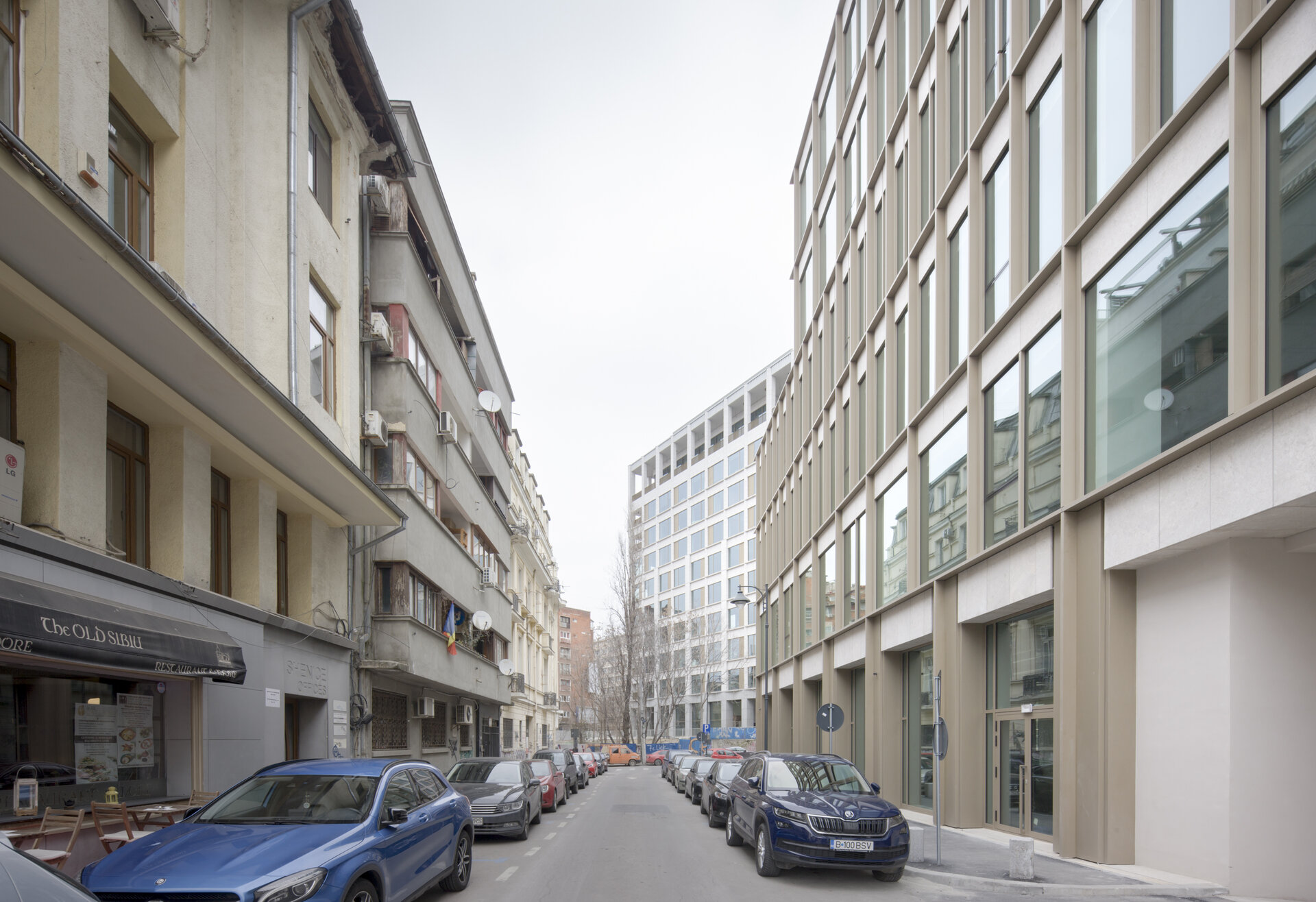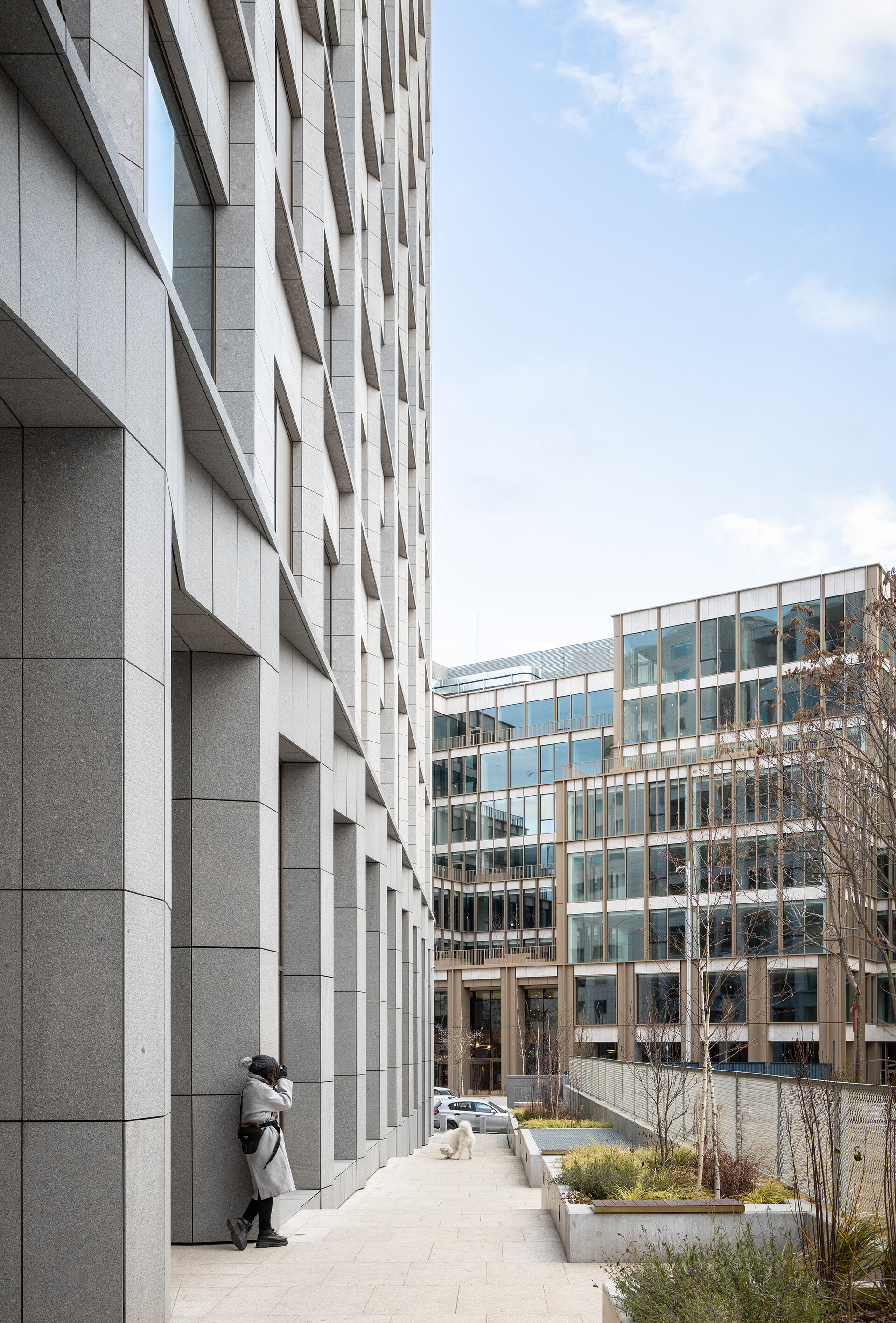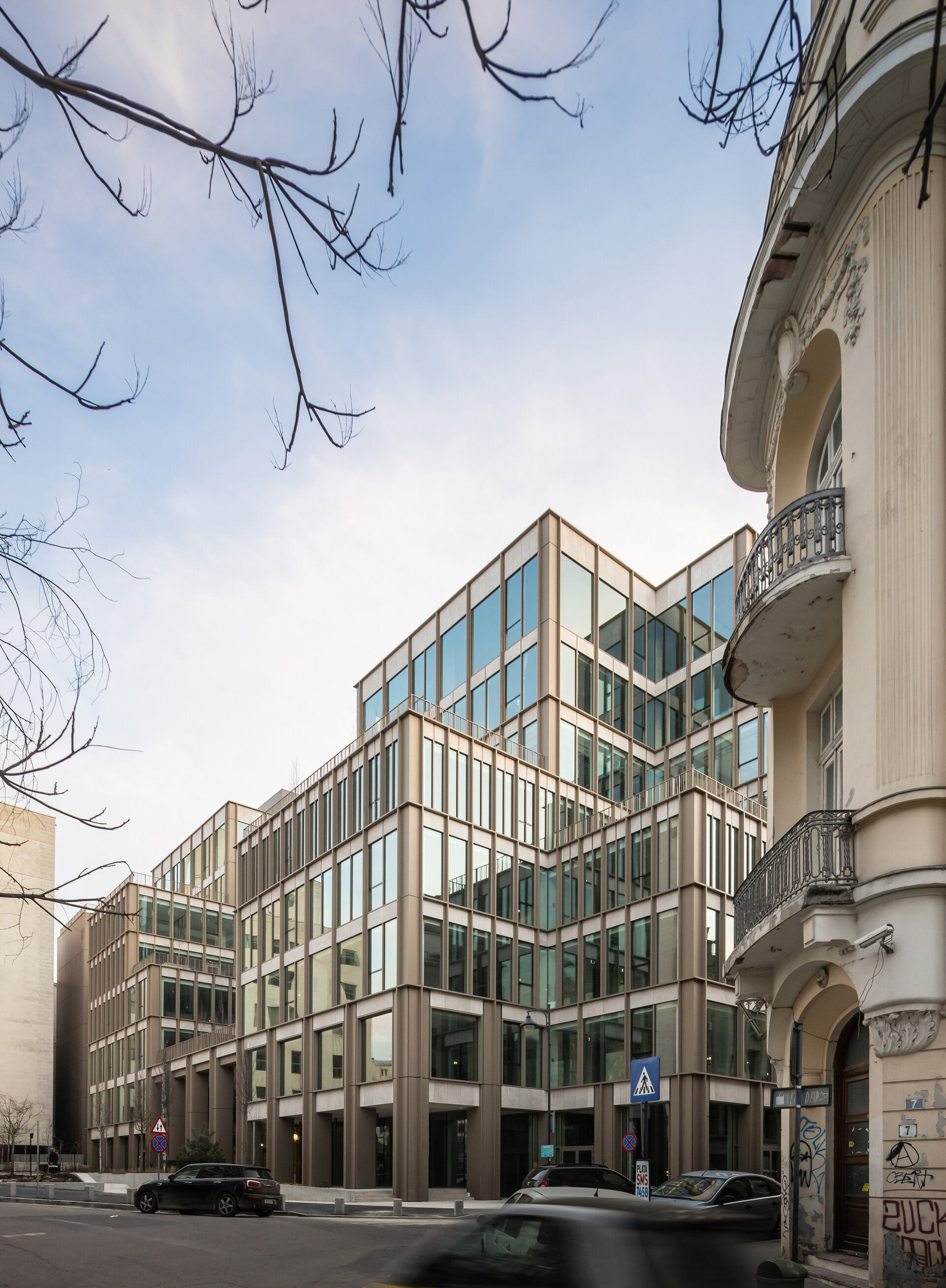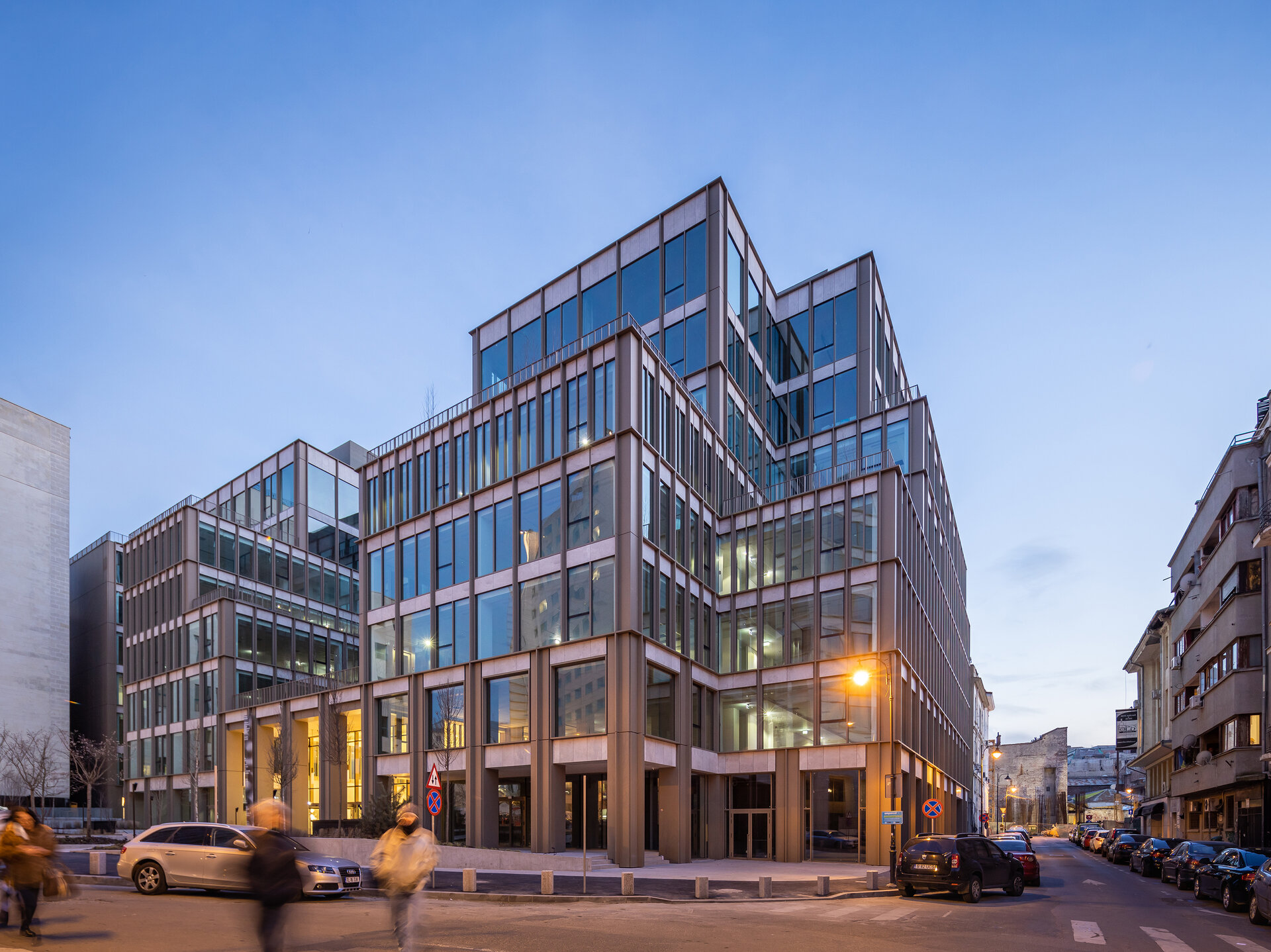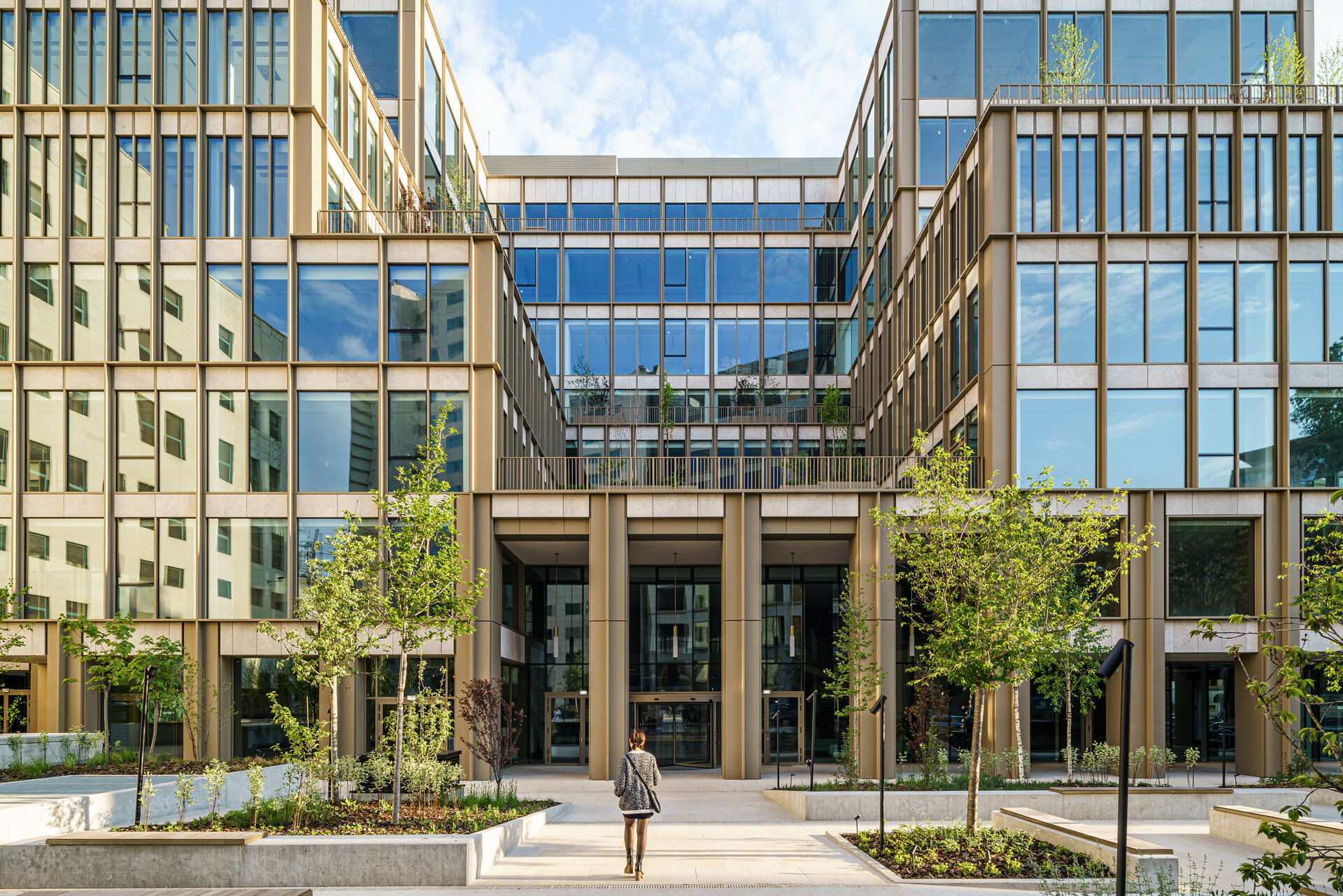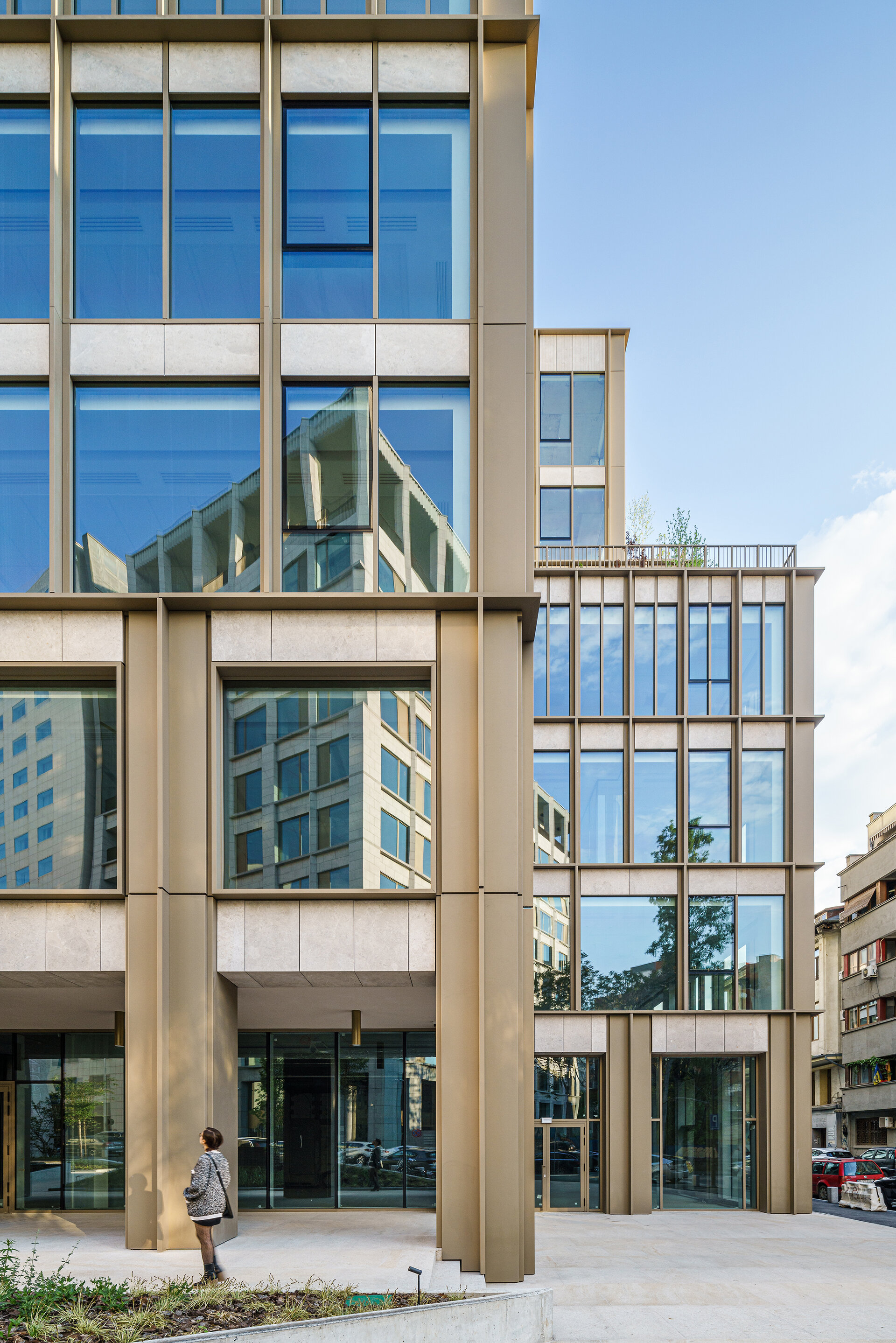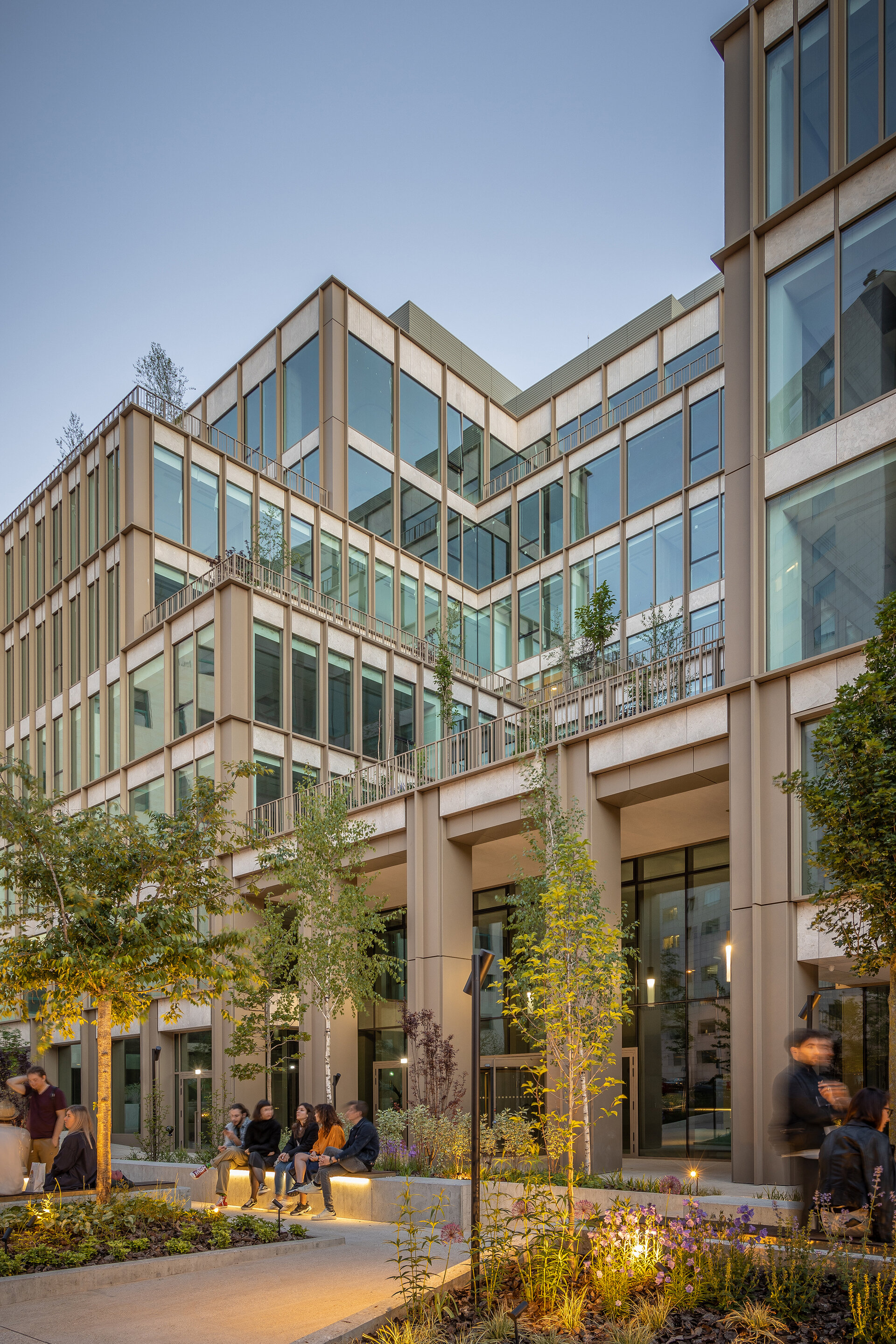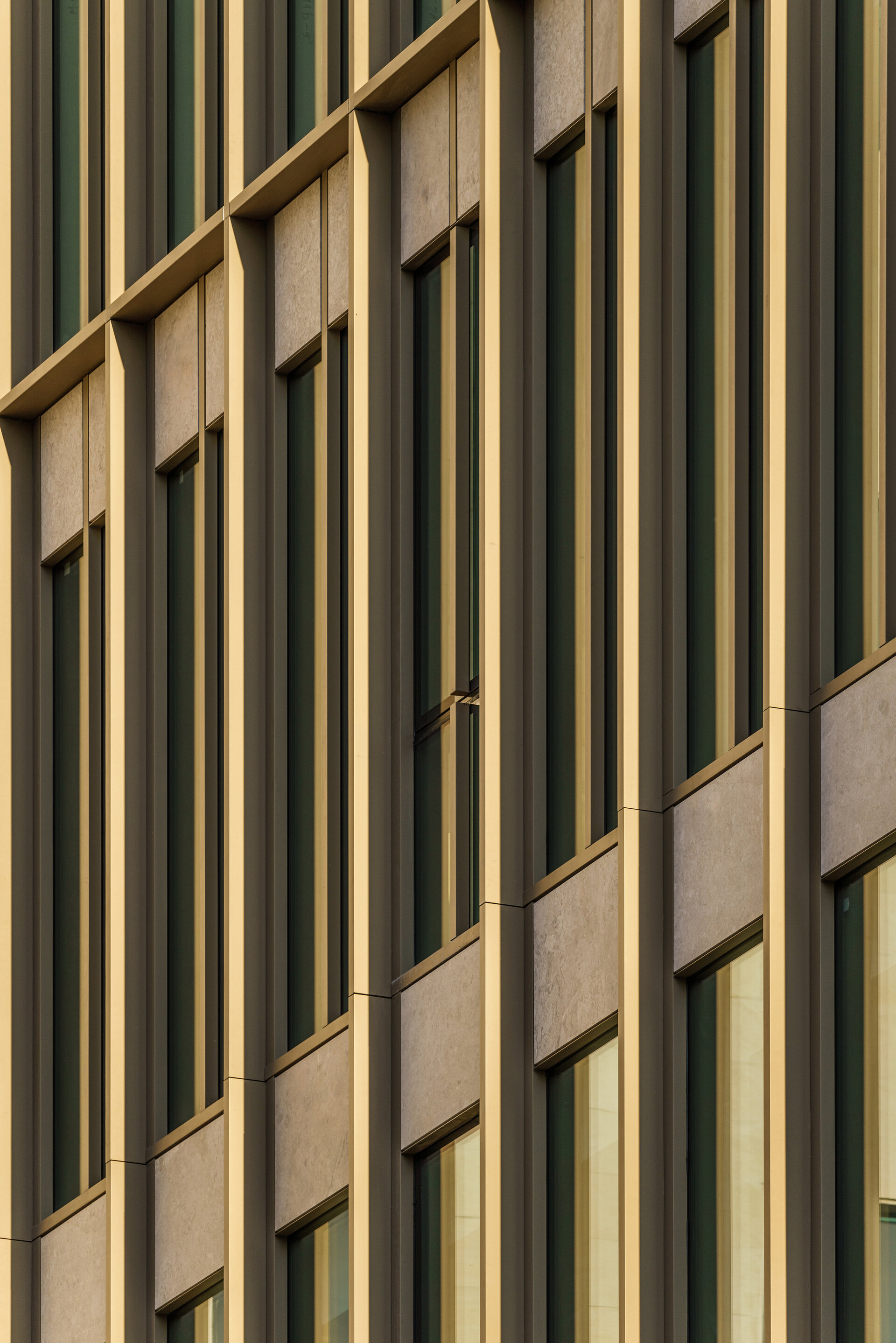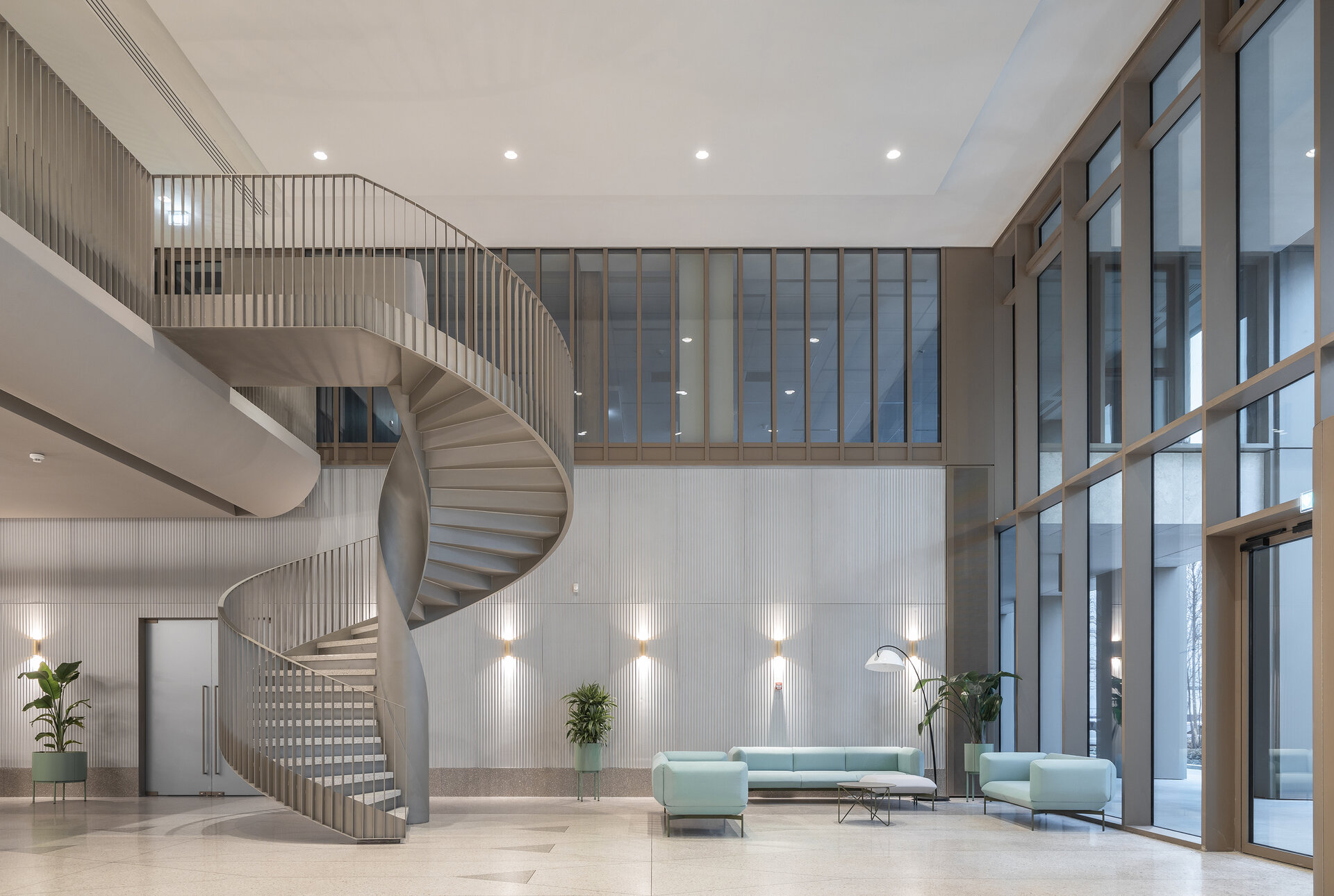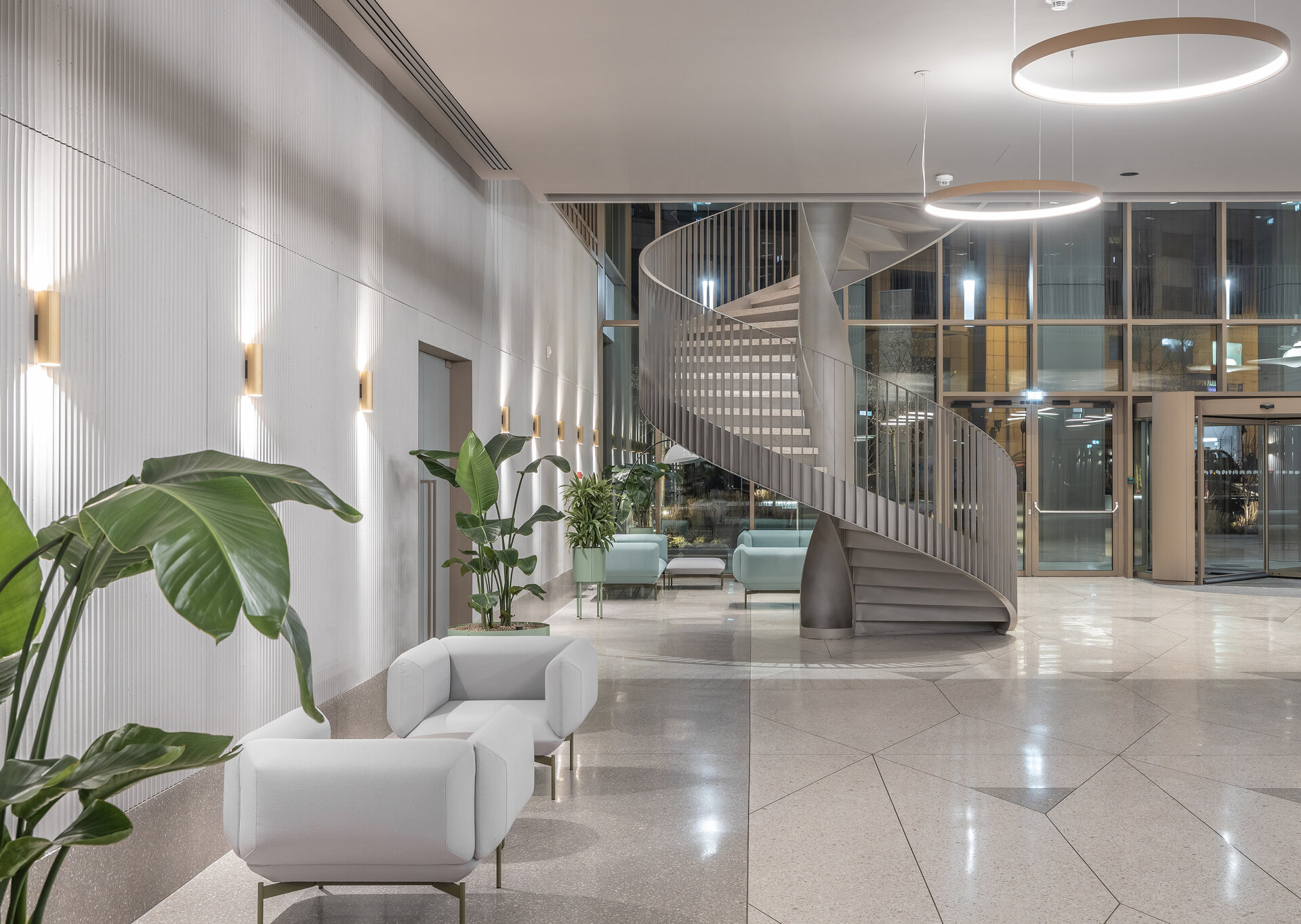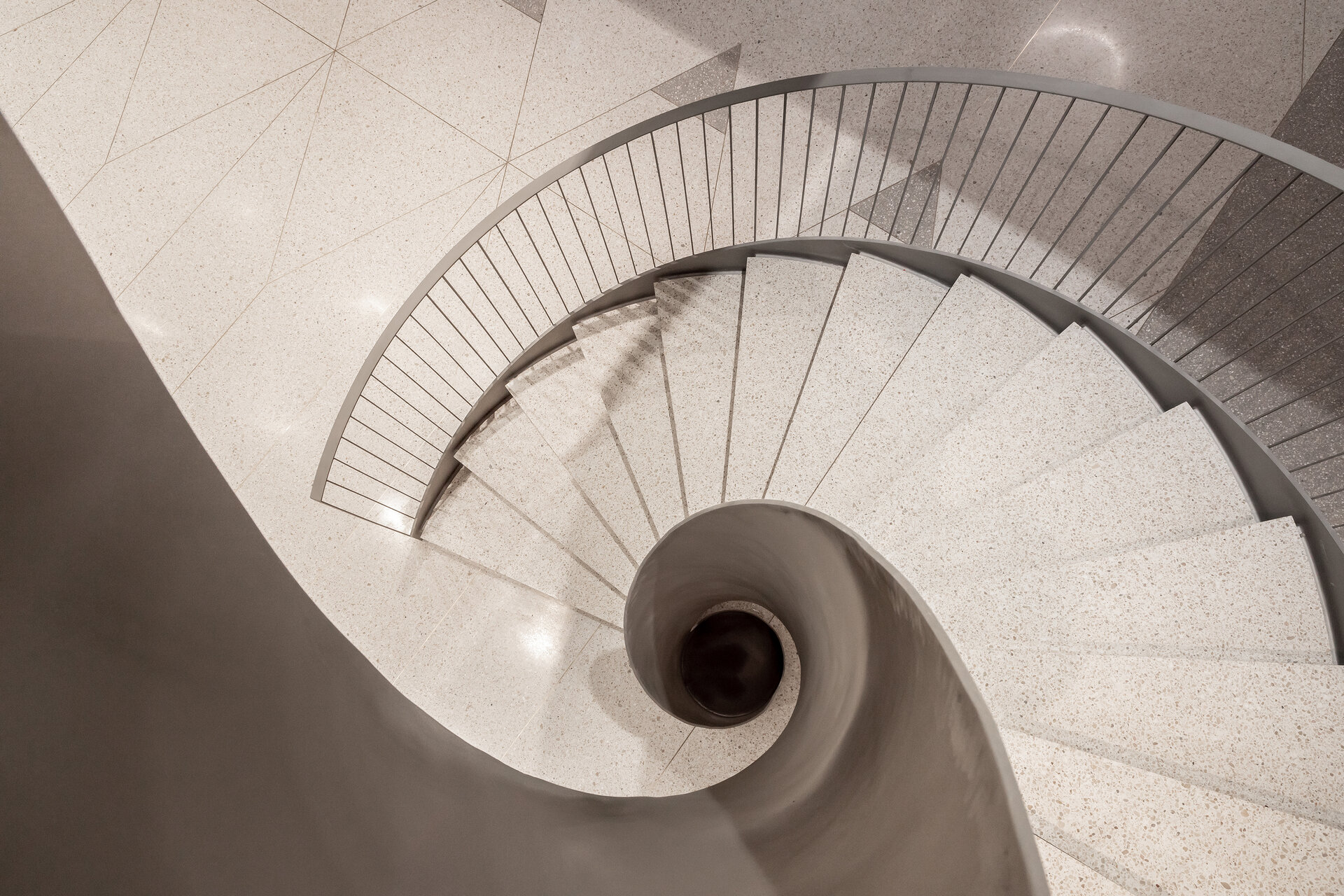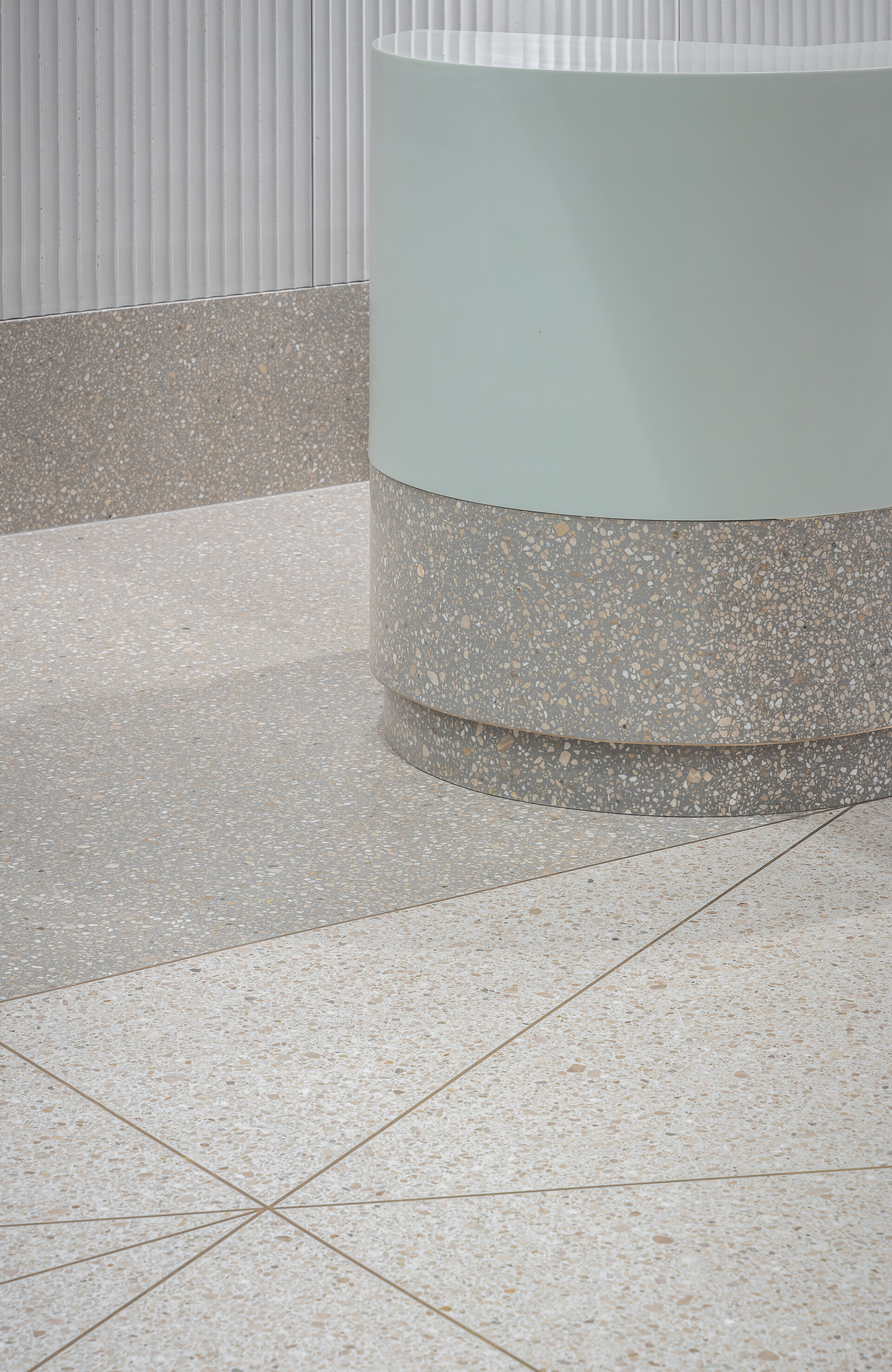
- Nomination for the “Built Architecture / Public Architecture” section
Tandem Office Building
Authors’ Comment
The Tandem and Millo buildings, two office buildings and public spaces located on either side of Matei Millo Street, form a large-scale recent intervention, with an impact on a wider area in the vicinity of Calea Victoriei. The background of this intervention is a heterogeneous area, with several large gaps in the fabric, where the new buildings try to restore a balance.
Unlike the Millo tower, the Tandem building is set back from the street, like the building that previously stood on the site and belonged to the Palace of Telephones. This retreat leaves room for a public square between the two new buildings, which continues with the new pedestrian route created between Matei Millo and Câmpineanu streets. After this reverence towards the street and towards a largo open to the public space, the building proposes a maximum occupation of the remaining land and, implicitly, a smaller number of levels than the Millo building, located opposite, which had taken over the height of the blind wall of Novotel hotel . Towards Oteteleșanu street, the volume closes the continuous front and connects to the different heights of the built masses. These gestures helped shape a building that sits between the lower, denser area of the Old Center and the taller buildings on the opposite side, which continue north with the Palace Hall complex.
The shape of the plan allows the light to penetrate evenly into all the interior spaces and the circulations to be as efficient as possible. On the ground floor, the occupation is one that follows the limits of what can be built and cuts out portico-type perimeter circulations, through which the ground floor opens up to the city, while from the second level, a series of terraces begin to follow each other that reduce the volume towards its upper part.
The building envelope (facades) seeks a sober, rational language, in which the sequences of vertical and horizontal metal profiles, glass and stone, give depth to the facade and make the glass facades more opaque, when the building is viewed in length, from any of the streets and adjacent sidewalks.
- ROSETTI Aparthotel
- Romanian Orthodox Ecclesiastical Center in Munich
- Nura
- Rapid Stadium - Giulești
- Tandem Office Building
- Rădăuți Lawcourt
- Buzești Tower
- Olga Gudynn Int'l School
- Lotca
- Retrofitting Dentamerica headquarter
- DestinyPark - a world ruled by children
- The fairytale kindergarten
- Two-Floor CLT office building
- Panduri 40 Boutique Offices
- Timisoara Convention Center
